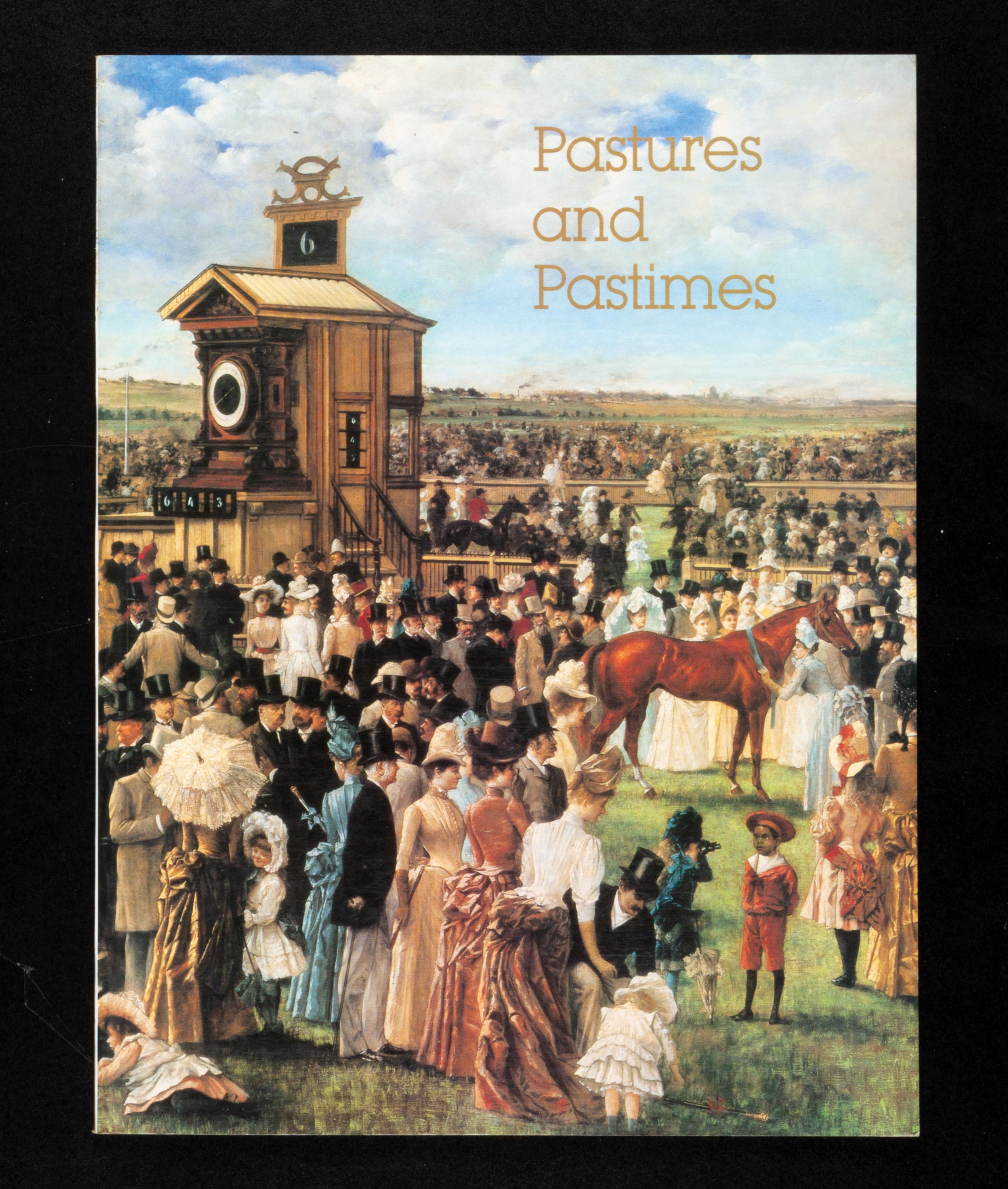Sporting Paintings by Frederick Woodhouse Snr and Jnr from The Laverty Collection
Pastures and pastimes:

Born in Essex, England in 1820, Frederick (Fred) v arrived in Melbourne in 1858 with his wife and four sons, including Frederick Junior, then aged ten. Another two sons were born subsequently; four of the six sons were to become artists. Woodhouse was an experienced artist, as well as a former yeoman cavalryman, and swiftly established himself as the colony’s pre-eminent sporting and animal artist. Over the next forty years, he was a prolific producer of oil paintings, watercolours, lithographs and illustrations for newspapers, magazines, catalogues and studbooks, he co-founded Bell’s Life in Victoria and Sporting Chronicle; published and illustrated a history of the Melbourne Cup; and designed sporting trophies. While thoroughbred portraits were his staple, he also painted hunting and coursing scenes, cattle, sheep, greyhounds and the occasional fishing, landscape or historical scenes. From 1860, Woodhouse exhibited in various local and intercolonial exhibitions and was a founding member of the Victorian Academy of Arts. His patrons included wealthy landowners such as the Chirnsides of Werribee Park and Austins of Barwon Park, who now-infamously introduced rabbits, hares, deer, foxes and numerous game birds into Victoria for their hunting pleasure.
Then, as now, racing was a popular sport. The Melbourne Race Club was formed in 1838, with Flemington becoming the site of Melbourne’s principal races from 1840. The Melbourne Cup was first held in 1861 and soon became a favoured annual spectacle. In 1888 when Mentor won, an estimated 143,000 people attended – many thousands more than attend now. The genre of the sporting picture had flourished in Britain in the late seventeenth and eighteenth centuries simultaneously with the breeding of thoroughbred horses, and the desire to records one’s prize-winning racers, stock and sporting achievements came with the British to Australia. Woodhouse timed his emigration well – one of his best-known achievements is painting the winner of the Melbourne Cup each year for over thirty years.
In the group of paintings offered here, we see three of Woodhouse’s oil paintings covering a range of equine topics: the racehorse Le Var (winner of many intercolonial prizes including the Perth Cup, 1898); the trotter Wanderer (winner of numerous Trots 1872 – 77); and an unidentified horse returned to its stall with the feathered and furred spoils of a hunt. Each follow the well-established profile pose emphasising their superb condition and breeding. The portrait of Mentor with his trainer and handler was painted by Frederick Junior, who had been apprentice and assistant to his father and whose technique is frequently similar in painterly precision and refinement of proportions. However, the increasing use of photography in the later nineteenth century reduced the demand for the fine horse portrait, and Woodhouse lamented the change: ‘A Melbourne Cup always meant £100 to me and the work occupied about a fortnight, but photography knocked me out. Now an owner can get a picture of his horse in a sixpenny weekly, or for nothing – wrapped around the meat.’1
The sporting genre in Australian art has received comparatively little attention, with the exception of kangaroo hunting scenes. These paintings are from the renowned collection of Dr Colin Laverty who became the expert on the art of the Woodhouse family, and author of Australian Colonial Sporting Painters: Frederick Woodhouse and Sons.
1. William Moore, cited in Laverty, C., Australian Colonial Sporting Painters: Frederick Woodhouse and Sons, The David Ell Press, Sydney, 1980, p. 12
ALISA BUNBURY
BACK TO CATALOGUE